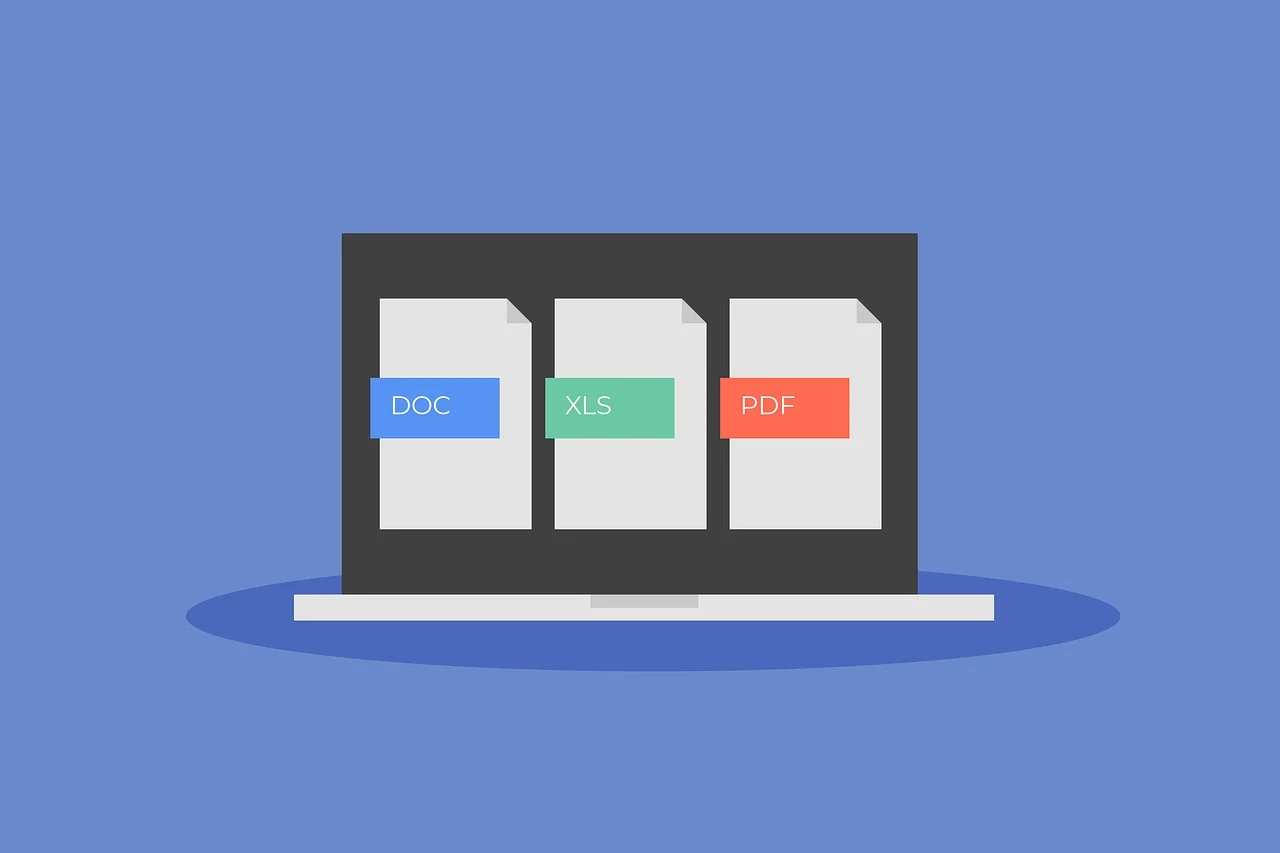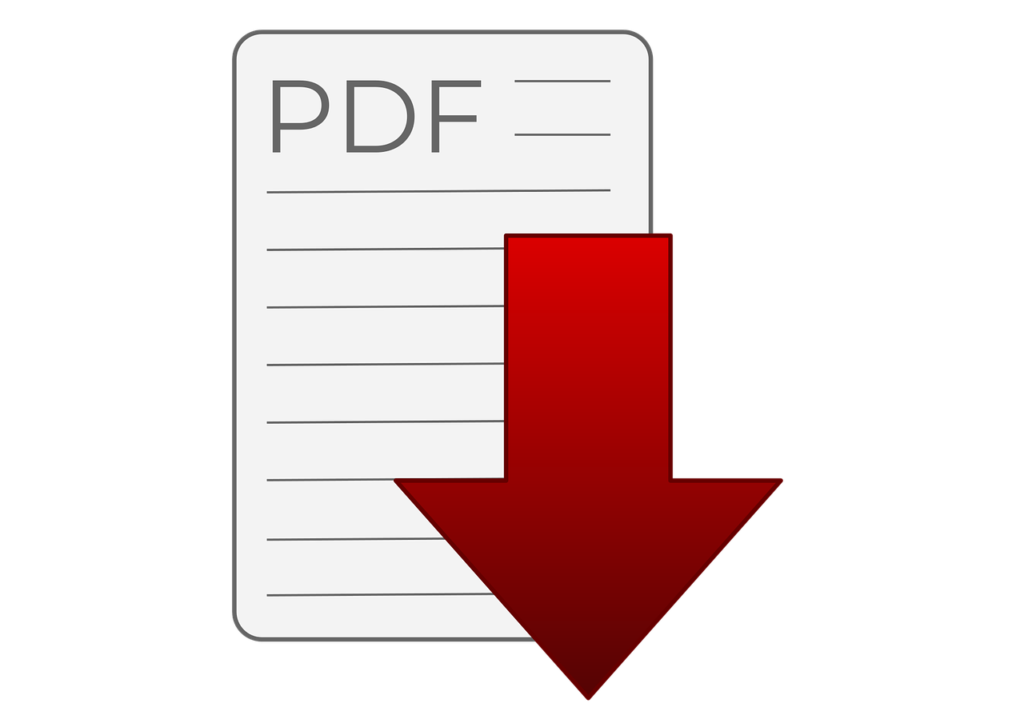Busniess
How to Optimize PDF Files for Business: From Creation to Storage and Sharing

PDF is the most popular business document format in the world today. In fact, businesses of all sizes in different industries distribute press releases, contracts, documents, and many more as PDFs.
This is because PDF files are generally easy to create, download, transfer, store, and share. The best part is that optimizing your PDF files is relatively easy. Read on to learn more about how you can optimize PDF files for your business.
Creating Optimized PDFs
One of the best things about creating optimized PDFs is that the process itself is relatively easy. You only need to select a PDF creation software. This can be Nitro PDF, Google Docs, Adobe Acrobat Pro, SmallPDF, & many others.
After choosing the software, select Create PDF. Then choose the file type you want to convert to PDF from your device. Once you are done, simply click on Create and you will have your optimized PDF file.
Resizing PDFs
Large-sized PDFs can make it difficult for you to transport and save the files. Therefore, the only option that you have is to resize them. You can change the page size of your pdf or reduce the entire file size. There are many ways that you can do this and they include the following:
Manual Methods
You can manually resize PDF files by changing their page dimensions. Do the following:
- Open your PDF editor
- Go to document or page settings
- Manually input the new dimensions for the page size (here you can choose to change from letter size to PDF)
- Apply and save the changes
Apart from the above method, you can use your PDF editor to check and unembed any fonts that you don’t need. Also, you can manually delete unnecessary elements like additional pages, annotations, or graphics to reduce file size.
Batch Processing
Batch processing allows you to compress multiple PDFs simultaneously. This will save you the effort and time of resizing them one by one. The best thing is that there are many tools that you can use to batch-process your PDF files and resize them.
These tools require different methods. Here is an example of how you can use batch processing to reduce your PDF files using Nitro PDF Pro:
- Open your PDF reader
- Go to Batch Processing
- In the batch processing window, choose Optimize from the list of options
- Click Add Files or Add Folder to select all the PDFs you want to compress
- Choose a compression profile. This can be the screen, where you reduce the quality to a level suitable for in-screen viewing (Smallest file size). Or, print to keep higher quality for printing purposes (moderate file size reduction).
- Select your output folder for the resized PDFs
- Click start to begin batch processing
Resolution Settings
In addition to the above, you can resize your PDF files by changing the resolution settings. This mainly involves lowering the resolution to reduce the file size. Its main impact is on file size and image clarity.
For the resolution setting, you can choose to adjust your PDF files to a low resolution of 72-96 DPI or a medium resolution of 150 DPI. To do this;
- Open your PDF editor
- Go to file and choose Optimize PDF
- Then go to the image quality setting and choose the resolution setting you want
- Apply changes and save your optimized PDF file
Storage Solutions and Organization
As your business grows, you will probably accumulate many PDF files and documents. The best thing is that PDF files are very easy to store and organize. To organize them, you need to set up a clear folder structure and ensure that you maintain it across all storage platforms.
Also, use unique naming methods and apply tags and keywords for quick searchability. When it comes to storage, consider cloud storage. This method provides an efficient way of document management since you can easily secure, store, and share your files.
Also, it reduces the risk of data loss due to unforeseen circumstances. The best thing is that you can consider several cloud storage solutions, including the following.
- OneDrive
- Dropbox
- Google Drive
PDF Compression Techniques

PDF compression techniques can help you reduce the size of your PDF files while maintaining their clarity and quality. Some of the best PDF compression methods that you can consider for your files are;
- Image compression, where you can choose to reduce the resolution or format of the images
- Removing unnecessary elements in the PDF files
- Adjusting PDF settings for output
- Using compression software and online tools like Nitro PDF pro or Adobe Acrobat pro
- Optimizing text and fonts
Sharing Optimized PDFs
Optimized PDFs allow for easy shareability. This is because they have a suitable size that enables users to share the PDFs across multiple platforms. After you are done compressing your PDF, you can then upload them to cloud storage solutions like Dropbox.
This will facilitate easy accessibility and shareability wherever you want. You can also use PDF-specific tools to share your optimized PDF files.
PDF Management Tools
There are many PDF management tools that you can use to optimize your PDF files. These tools will provide you with a unique set of features that you can use to organize, edit, annotate, secure, and share your PDF files efficiently.
Some of the top PDF management tools in the market include the following:
- Nitro PDF pro
- Adobe Acrobat pro
- Foxit PDF editor
- PDFelement
- SmallPDF
Best Practices for Different Industries
When it comes to PDF management, different industries implement different best practices. For instance, in the healthcare industry, patient PDF record files should be encrypted to ensure that healthcare organizations comply with HIPAA regulations.
The best practice for the legal industry involves the use of secure document management systems to store legal PDFs–ensuring compliance with regulations like local laws or GDPR.
On the other hand, in the education industry, you should use PDF management tools that allow real-time collaboration on PDF notes and assignments. This can foster an interactive learning environment.
Conclusion
Businesses today cannot operate without PDF files and as you can see from above the process of optimizing them is relatively straightforward. You only need to choose the best PDF editor to begin the process of resizing, storage, and sharing.
Busniess
How to Avoid Potential Franchise Scams

Franchising has become a popular path to entrepreneurship, offering the benefits of an established brand, operational support, and a proven business model. However, as the industry continues to grow, so do the number of deceptive operators posing as legitimate franchisors. Franchise scams can drain finances, ruin reputations, and leave hopeful business owners in legal and emotional distress. While most franchise opportunities are genuine, it’s crucial to approach the process with caution and awareness. By understanding how these scams work and knowing what to look out for, you can protect yourself and your investment from falling victim to fraudulent schemes.
Research the Franchisor Thoroughly
The first step in avoiding a franchise scam is doing your homework on the franchisor. A legitimate franchise will have a clear history, public information about its operations, and an established brand presence. Look for a verifiable track record, including how long the company has been franchising, how many units are in operation, and what kind of reputation it has among current and former franchisees. Be wary of franchises to buy that claim explosive growth but provide little concrete data to back up their success. Scammers often use flashy marketing or exaggerated success stories to lure in investors, so independent research is essential.
Examine the Franchise Disclosure Document (FDD)
Any legitimate franchisor operating in the United States is legally required to provide a Franchise Disclosure Document (FDD). This document outlines the franchisor’s financials, legal history, fees, and obligations. If the franchisor hesitates or refuses to provide this document upfront, consider it a red flag. Even if you receive an FDD, it’s vital to read it closely or have it reviewed by a qualified franchise attorney. Look for hidden fees, vague territory rights, or any inconsistencies in the information presented. A franchise scam may involve altered or misleading documentation that creates a false sense of legitimacy.
Watch for High-Pressure Sales Tactics
Franchise scammers often use high-pressure sales tactics to get you to sign a contract quickly without giving you time to think or investigate properly. They may say that spots are “limited,” that a “special deal” is about to expire, or that you’ll miss out on a lucrative opportunity if you don’t act now. Legitimate franchisors understand that buying a franchise is a serious decision and will give you the time and information you need to make an informed choice. If you’re being rushed or discouraged from seeking legal or financial advice, take it as a warning sign.
Understand the Real Costs
Franchise scams often downplay the true cost of starting and operating the business. While some opportunities may advertise low start-up fees, they may leave out the cost of equipment, marketing, licenses, insurance, or inventory. Before committing, ask for a full breakdown of costs and verify those numbers with third-party sources or other franchisees. If promises of quick returns or guaranteed profits seem too good to be true, they likely are. Transparency in financial expectations is a hallmark of a legitimate franchise system.
Talk to Existing and Former Franchisees
One of the best ways to verify a franchisor’s legitimacy is by speaking with existing and former franchisees. They can offer insights into how the franchisor operates, whether they deliver on promises, and what kind of support is actually provided. If a franchisor is reluctant to connect you with other owners—or only offers a few handpicked contacts—that should raise concern. Honest and open communication with the franchise network is an indicator of a trustworthy organization. Former franchisees, in particular, may be more candid about challenges or reasons for leaving the system.
Get Legal and Financial Advice
No matter how appealing a franchise opportunity looks, it’s critical to consult with a franchise attorney and financial advisor before making a decision. These professionals can spot red flags in the contract, help you understand your rights and obligations, and ensure you’re making a sound financial move. Scams often rely on confusing language or vague terms that a legal expert can quickly identify. Taking this extra step can save you from making a costly mistake that could have long-term consequences.
Conclusion
The world of franchising offers many exciting and profitable opportunities, but it’s not immune to deception. As with any significant investment, protecting yourself starts with being informed, cautious, and willing to ask tough questions. By thoroughly researching the franchisor, reviewing documents with care, recognizing aggressive sales tactics, and seeking professional guidance, you can dramatically reduce your risk of falling into a franchise scam. With the right precautions in place, you can confidently pursue a franchise opportunity that delivers on its promises and leads to long-term success.
Busniess
Delish Menu: The Dishes That Keep Customers Coming Back

What makes a menu truly delish—mouthwatering, memorable, and impossible to resist?
Whether you’re a home chef, restaurant owner, or food entrepreneur, crafting a delish menu is both an art and a science. It’s not just about great flavors—it’s about presentation, balance, and psychology. In this guide, we’ll explore expert-backed strategies to create a menu that delights taste buds and drives repeat business.
1. The Psychology of a Delish Menu
A. The Power of Descriptive Language
Research from Cornell University shows that vivid, sensory-rich descriptions can increase sales by up to 27%. Instead of “Chocolate Cake,” try:
“Decadent Dark Chocolate Fudge Cake with Velvety Ganache & Fresh Raspberry Drizzle”
B. Strategic Placement Matters
-
Eye-tracking studies reveal that customers scan menus in a “Z-pattern”—top-left to top-right, then bottom-left to bottom-right.
-
Place high-margin items in these prime spots.
C. The Rule of Three
People love choices, but too many options cause decision fatigue. Limit categories to 3-5 dishes per section (appetizers, mains, desserts).
2. Balancing Flavors & Textures
A delish menu should offer contrast and harmony. Here’s how:
A. The Flavor Wheel Approach
Mix:
-
Sweet (honey-glazed salmon)
-
Savory (umami-packed mushrooms)
-
Spicy (chili-infused oils)
-
Tangy (citrus-marinated salads)
B. Texture Play
Combine:
-
Crispy (fried shallots)
-
Creamy (avocado mousse)
-
Chewy (slow-cooked brisket)
Example: A delish taco menu might include:
-
Crunchy cabbage slaw
-
Tender pulled pork
-
Creamy chipotle sauce
3. Seasonal & Local Ingredients = Freshness Guaranteed
Today’s diners crave authenticity and sustainability.
A. Farm-to-Table Wins
-
Highlight local suppliers (e.g., “Locally sourced heirloom tomatoes from Green Valley Farms”).
-
Rotate dishes seasonally to keep things exciting.
B. Global Flavors with a Twist
Fusion trends like Korean BBQ tacos or miso caramel desserts keep menus fresh and Instagram-worthy.
4. Pricing Strategies That Feel Delish, Not Dishy
A. The “Decoy Effect”
-
Place a premium-priced item next to a slightly cheaper (but high-margin) dish to make the latter seem like a steal.
B. Avoid Dollar Signs
Studies show menus without “$” symbols lead to higher spending.
5. Visual Appeal: A Picture Is Worth 1,000 Bites
-
High-quality photos of bestsellers boost sales (but don’t overdo it—3-5 images max).
-
Color psychology matters:
-
Red stimulates appetite (great for burgers).
-
Green signals freshness (ideal for salads).
-
6. Real-World Delish Menu Inspirations
A. Sweetgreen’s Seasonal Rotation
Their ever-changing menu keeps customers curious and coming back.
B. The Cheesecake Factory’s Strategic Descriptions
Their detailed, indulgent language makes every dish sound like a must-try.
7. Final Tips for Your Delish Menu
✅ Test & Refine – Use customer feedback to tweak dishes.
✅ Keep It Simple – Focus on quality over quantity.
✅ Tell a Story – Share the inspiration behind a dish.
Conclusion: Ready to Create Your Own Delish Masterpiece?
A delish menu isn’t just about great food—it’s about experience, psychology, and smart strategy. By balancing flavors, using enticing descriptions, and staying seasonal, you’ll craft a menu that keeps customers craving more.
Busniess
Fueling Success: Why Your Choice of Fuel Vendor Matters

In the high-octane world of business, the vendors you choose to supply your essentials can have a dramatic impact on your bottom line and operational efficiency. This is particularly true for enterprises that heavily rely on fuel for transportation, delivery services, agriculture, or construction. The right fuel vendor not only ensures a steady supply of energy but also adds value through superior product offerings and services. Below, we’ll explore the critical factors that make choosing your fuel vendor a decision with far-reaching implications for your business.
The Role of Fuel Quality in Operational Efficiency
Using high-quality fuel is essential for keeping machinery and vehicles running efficiently. It helps improve engine performance, reduces maintenance costs, and minimizes downtime. Poor fuel can cause buildup and engine issues, leading to costly repairs and interruptions in operations. That’s why it’s crucial to choose a reliable fuel vendor that delivers clean, high-performing products.
Trusted vendors also ensure compliance with safety and environmental standards, helping businesses avoid fines and equipment failures. Advanced options like Alberta diesel offer improved fuel economy and engine longevity, making them a smart choice for companies focused on performance and profitability.
Evaluating Fuel Vendor Reliability and Service Consistency
Vendor reliability plays a critical role in maintaining smooth operations by preventing fuel shortages and minimizing disruptions. Evaluating a fuel vendor involves reviewing their history of timely deliveries and ability to meet demand during peak times or unforeseen challenges. Consistent service also includes strong customer support, clear communication, and flexible payment terms, all of which ease procurement and reduce administrative workload.
A dependable vendor is equipped with contingency plans to ensure uninterrupted fuel supply during emergencies or market fluctuations. Value-added services such as fuel management systems, reporting tools, and related products help streamline operations and provide insights into usage, enabling better fuel expense management.
Cost Implications of Fuel Vendor Selection
Fuel costs significantly impact a company’s financial health, making it essential to secure a vendor offering competitive rates. However, low prices alone aren’t enough; hidden costs from poor fuel quality, supply issues, or lack of support services can outweigh savings. Long-term contracts and bulk purchases can help stabilize prices and improve budget predictability.
Negotiated agreements with flexible pricing structures offer protection from market fluctuations. Indirect costs, such as equipment damage from subpar fuel, should also be factored in when evaluating a vendor. A vendor’s supply network plays a critical role in minimizing transportation expenses and improving delivery efficiency, both of which affect a business’s overall operating costs.
Environmental Considerations in Choosing a Fuel Supplier

Fuel consumption’s environmental impact is a growing concern for both businesses and consumers. Partnering with a fuel vendor that emphasizes sustainability helps reduce carbon footprints through cleaner fuel options and regulatory compliance. Vendors investing in biodiesel, ethanol blends, and other alternative fuels show strong environmental commitment while helping businesses meet sustainability targets.
Responsible vendors also adopt green technologies, minimize transportation emissions, and support carbon offset programs, reflecting a broader dedication to eco-conscious operations. These practices can enhance a company’s image and contribute to long-term cost savings through greater energy efficiency. Choosing a fuel vendor with sustainable practices can also open access to tax incentives and government support.
How Fuel Vendor Partnerships Can Enhance Business Growth
Partnering with the right fuel vendor is a strategic advantage that supports business growth. An adaptive vendor can meet evolving demands by increasing fuel volumes, introducing new technologies, and aiding in scaling operations. A strong distribution network enables seamless fuel supply to new locations, which is essential for geographic expansion and maintaining consistent service.
Vendors that provide data-driven insights into fuel usage help businesses boost efficiency, reduce waste, and make informed decisions. Long-term relationships can also foster innovation through collaboration, allowing businesses and fuel suppliers to co-develop tailored solutions. These partnerships leverage shared expertise to drive progress, support operational goals, and keep businesses competitive in a changing market.
Overall, the implications of choosing a fuelvendor extend far beyond a simple transaction. The right partnership impacts operational efficiency, cost management, environmental responsibility, and ultimately, the trajectory of business growth. In gathering insights from this article, business leaders can make an informed decision that will fuel their success for years to come.
-

 Articles3 months ago
Articles3 months agoHow Many Times Can You Regrow Green Onions
-

 News11 months ago
News11 months agoUnderstanding HotLeaks: What You Need to Know
-

 Fashion8 months ago
Fashion8 months agoOpals in the USA: A Gemstone Transforming the Crystal Healing Market
-

 Entertainment8 months ago
Entertainment8 months agoHow to Use Snaptik: A Complete Guide to Download TikTok Videos
-

 Technology1 year ago
Technology1 year agoThe Wonders of Oh Em Gee Blog
-

 Entertainment1 year ago
Entertainment1 year agoBare it All: Unforgettable Skinny Dipping Stories Shared
-

 Health1 year ago
Health1 year agoCan You Smoke Shrooms? Exploring the Myths and Realities
-

 Articles5 months ago
Articles5 months agoWHAT IS THE DIFFERENCE BETWEEN SEED GARLIC AND FOOD GARLIC?
